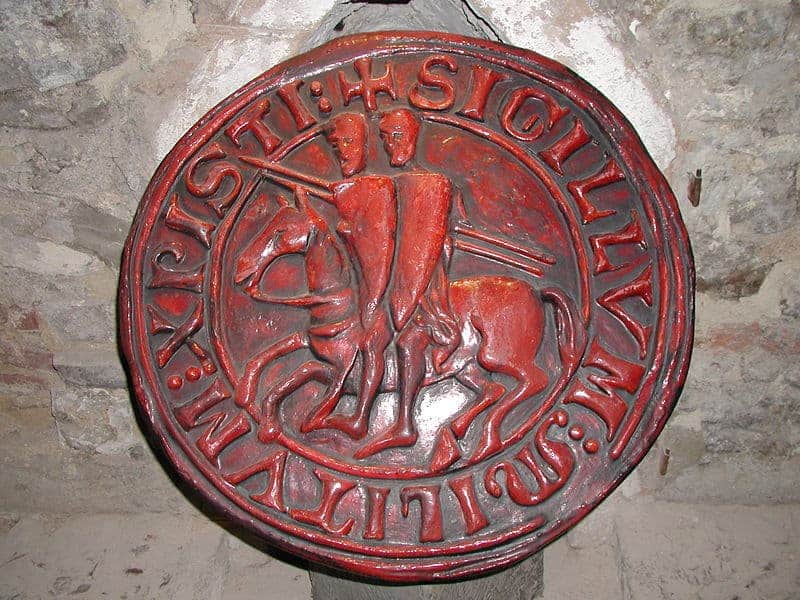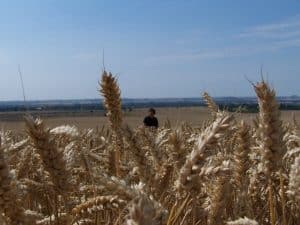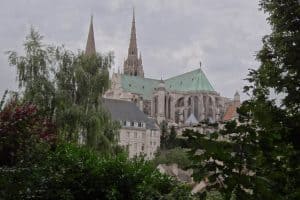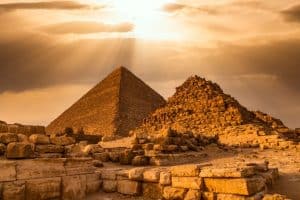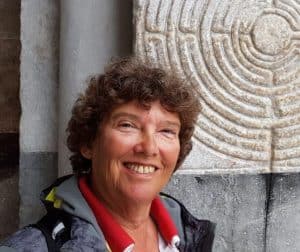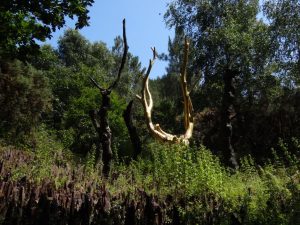Since the Crusades, the Knights Templar have been surrounded by mystery, legend, and rumors of the supernatural. The chivalric order was founded in the old French city of Troyes at the beginning of the 12th century. It was known throughout the Middle Ages for its military, architectural, and financial skills.
Who founded the Knights Templar?
The Knights Templar were founded in 1118 by Hughes De Payan and eight other knights. They were aided by Saint Bernard de Clairvaux, a Cistercian monk. In 1119 these nine men set off on a mysterious quest and called themselves Poor Knights of Christ and of the Temple of Salomon.
Hugues De Payens and Hugh, count of Champagne, first met when they were on their way to the Holy Land in 1104. They went there to reinforce the crusaders in their battle against the Seljuq Turks. Something must have intrigued Hugues de Payens for he returned to Jerusalem three years later by himself. After this second expedition, he went back to France to recruit the eight other knights, Hugues de Champagne being one of them.
Together they formed a military order and Hugues de Payens became their first Grand Master.
The first templars were:
- Hugues de Payens (founder, 1118) (first Grand Master, 1118–1136)
- Godfrey de Saint-Omer
- Payens de Montdidier
- Archambaud de Saint Armand (or Saint Aignan)
- André de Montbard
- Hugues de Champagne
- Fulk V, Count of Anjou
- Gundemar, Cistercian Priest and Templar, relative of Bernard of Clairvaux
- Rossal/Roral, Cistercian Priest and Templar, relative of Bernard of Clairvaux

The Knights Templar and the Holy Grail
The relationship between the Knights Templar and the Holy Grail may be far-fetched, but historically, you can certainly relate the grail writers to the temple knights.
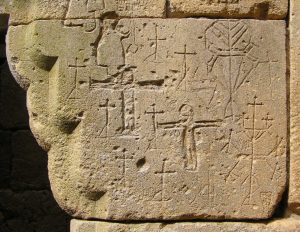
Knights Templar Art – Mysterious Templar Graffiti in Domme
The Knights Templar art (the graffiti of the templars) refers to the images the Knights Templar carved into the walls of their dungeon in Domme
Why were the Knights Templar founded?
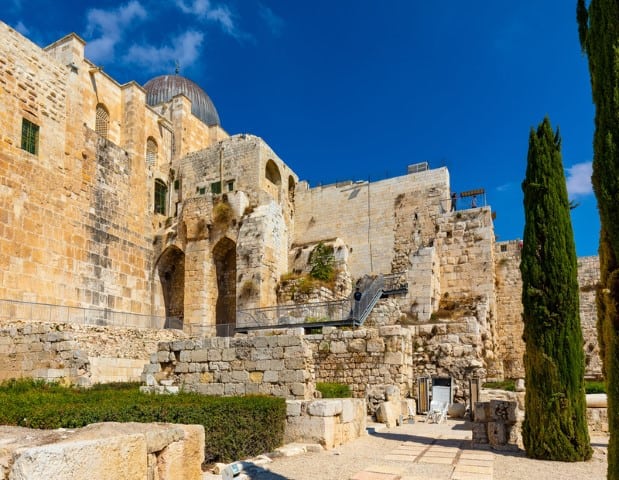
Officially the purpose of the Knights Templar was to protect pilgrims on the road from Jaffa to Jerusalem but probably they had a different, more secretive reason for their stay in Jerusalem.
From what they did when they got there, it seems clear that the Templars were very interested in what was on top of (or under) the Temple Mount. Once the small group of knights arrived in Jerusalem, they went straight to King Baldwin II and asked him to give them a piece of the former Al-Aqsa mosque that he had turned into his personal palace.
The Templars didn’t want just any part of the huge complex. They wanted the part of the mosque closest to the Dome of the Rock and the buildings around it. Strangely enough, King Baldwin agreed right away to what these nine knights wanted. The reasons they gave Baldwin must have been very convincing, but none of them have been passed down to us.
So, officially they were there to protect the pilgrims, but instead, they literally went underground and worked in and around the Dome of the Rock for the next seven years. Some of what they did is still around today. The Shetiyyah still has marks from medieval tools on its surface, and in 1985, an Israeli team of archaeologists found what they thought was a Templar-built tunnel that led directly under the Dome of the Rock, but it had been closed off for a long time. Because of the political situation, the tunnel is no longer accessible. Excavations under the Temple Mount are strictly forbidden.
The templars, however, seemed to have been on a secret mission, trying to uncover something that was hidden in the Temple Mount.
What did the Templars find in Jerusalem?
What, if anything, the Templar Knights found hidden under Al-Aqsa is a question that has been debated for a long time. No answer can be historically proven, but some are more likely than others. Here are some hypotheses: The Templars found The Holy Grail, The Ark of the Covenant or some secret (masonry) knowledge.
- The Templars found the Holy Grail.
This could be true, but it is not very likely this grail was the cup Jesus drank from at the Last Supper and that Joseph of Arimathea used to collect his blood after he died on the cross.
Actually, the Holy Grail was first mentioned in 1181, about seventy years after the Templars started digging under the Temple Mount. Chrétien de Troyes wrote about the Holy Grail, being a bowl or a stone with magical powers. Maybe Chrétien was inspired by the Templars’ find. After all, he was employed as a writer by the grandson of Hugh the Champagne, who was one of the Knights Templars’ founders.
- The Templars found the Ark of the Covenant.
The Ark vanished in 587 BC after de Babylonians conquered Jerusalem. Before that, the Ark was kept in the holiest chamber of the Temple in Jerusalem. It is possible priests hid the Ark of the Covenant while Jerusalem was under siege.
The Ark of the Covenant was a kind of ‘war machine’, just touching it without the necessary precautions, meant instant death. If they had found it and somehow managed to use it, it would have been the ultimate weapon in the crusades.
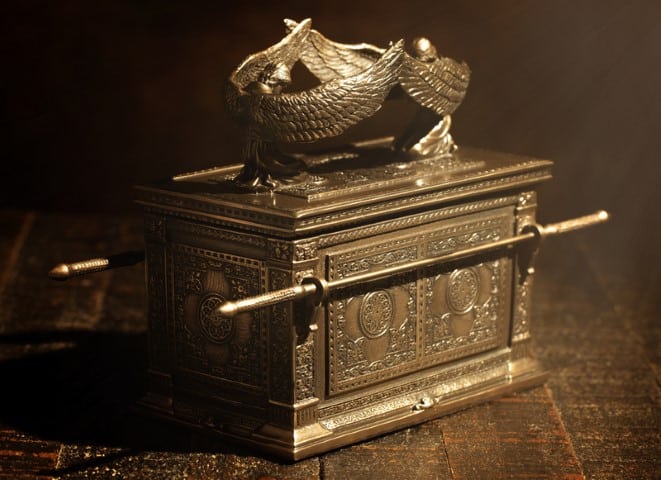
- The Templars found some secret masonry knowledge
The Temple in Jerusalem was built in the days of Salomon. In Freemasonry circles, it is believed that Salomon used some special building techniques. The Templars took this technique with them to Europe and used it to construct Gothic churches. Around the year 1130, this style of architecture started to spread across Europe; first in France, and then it spread to the rest of the Christian world.
What was the Council of Troyes?
On January 13, 1129 the council of Troyes took place. It set the rules for the Order of the Temple, making it the first religious and military order in Christendom.
Hugh De Payens himself went back to France to take part in this Council. Here the Church’s leaders got together to decide what would happen to the new order. The Cistercian abbot St. Bernard of Clairvaux supported De Payens in persuading the Church of the value of the Knights Templar. He even wrote the initial “rules” of the Order basing them on the Cistercian rules, emphasizing chastity, obedience, and poverty.
In 1139, the Templars were declared a monastic order under the protection of the Church in Troyes, but Clairvaux insisted that Pope Innocent II recognize this new order as being under the exclusive authority of the Pope, with no other temporal or ecclesiastical authority.
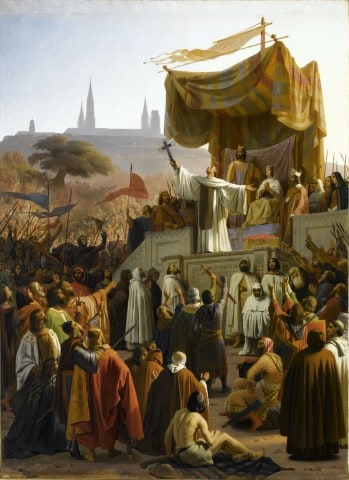
How did the templars become so rich and powerful?
Bernard de Clairvaux would go on to become the most devoted supporter of the Templar knights in the Holy Roman Empire. He did this by using his position in the Church to bring in huge numbers of new members, donations of money, and gifts of land.
- The Knights Templar would use religious support to build an empire that was strong in finance and the buying and developing of land. At the height of their power, they had 20,000 people working for them, only 2,000 of them were knights. The rest worked as administrators, laborers, and clerks.
- The Templars fought in the Crusades, recruited young sons of nobles, and trained them to be monks and knights.
- The Templars built the strongest castles and fortifications in Europe.
- The Templars used their outposts along the pilgrim roads to create the world’s first international banking system. Pilgrims would deposit gold at one location, get a chit with the amount held in deposit, and withdraw money as needed at other Templar outposts along the road.
- The Templars loaned their money out at a profit, using it to buy property all over Europe.
- The Templars were granted the right to build their own churches by Pope Innocent II, and did so to the fullest extent.

Why were Knights Templar killed?
The Knights Templar became too powerful. Phillip IV, the King of France was greatly indebted to them, and his only way out was to arrest all the templars at the same time, accusing them of heresy (to get the pope on his side) and to take all of their money.
So, On Friday, October 13, 1307, the French King, Philip (Philip IV) the Fair, arrested the various knights, monks, and households of the Knights Templar. They were charged with serious heresies, including the denial of Christ, homosexuality, and idol worship. The court cases that followed took almost five years and ended with the Order being formally disbanded at the Vienna council in 1312.
The last Grand Master of the Templars, Jacques de Molay, was burned alive in Paris on March 18, 1314, along with 40 other Templars. As the flames slowly consumed him, he is said to have cursed the king and the pope. Both died in the same year.
Some believe the Knights Templar went underground and still exist as a secret order. If you follow this link, you will find a list of nine contemporary orders that claim to be an offshoot of the Knights Templar.
This story is also available on my Dutch website: Alles over de tempeliers in zes simpele vragen

